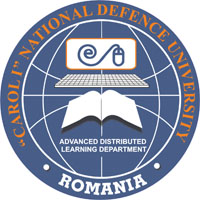DIDACTIC COMMUNICATION IN THE ONLINE ENVIRONMENT
DIDACTIC COMMUNICATION IN THE ONLINE ENVIRONMENT
Author(s): Mirela Ioniță, Veronica PĂSTAESubject(s): Education
Published by: Carol I National Defence University Publishing House
Keywords: online communication; virtual environment; e-learning; receiver; message; medium
Summary/Abstract: Didactic communication is the explanatory dimension of pedagogical communication, and is characterized by its specific goal of facilitating the transfer of knowledge. Thus, the contents are not stated and explained in their purely scientific form: instead, they are rephrased so as to be understood by their recipients, according to certain cognitive and psychological parameters, and are structured following the principles of pedagogical logic. Psychopedagogical communication underlies the formal educational process, and it entails the sharing of didacticized information with educational purposes, irrespective of the contents, levels, forms, or partners involved in it. The characteristic features of didactic communication in the virtual environment result from the specific character of e-learning. The teacher has a much lower profile in online learning, in comparison to the classical, face-to-face system. Without losing one’s authority, the teacher actually takes over the tasks of a moderator, who guides the activities towards effectively reaching the educational goals. Student-centered learning promotes the active participation of students in the process of instruction. As far as e-learning is concerned, didactic communication keeps the convergence, asymmetry, and interactivity parameters; however, these take on a different configuration, which can also be noticed in the different typology of malfunctions that can occur within the e-learning process. It is obvious that didactic communication within the virtual environment is not achieved directly, as in traditional learning; instead, it is reached through mediation, which means that there inevitably is incomplete communication, as both the nonverbal and paraverbal components, so critical to the emotional learning motivation provided by a committed teacher, are lacking. To make up for this are the digital resources, no less attractive, or effective. The fascinating ways of introducing various contents, as well as the countless possibilities for interaction provided by e-learning, are a viable substitute for digital natives, in terms of human interaction; even so, the teacher’s pedagogical qualities cannot be brought into question. The mediated feedback within online learning can be considered more objective, as it has digital support, and therefore fulfils the self-regulating function of the educational act in a more comprehensive manner, having an impact on both the didactic act proper, and the means, and instruction methods implemented. Making didactic communication meet the requirements of learning in the irtual environment, particularly the psycho-cognitive premises of the actors involved in the formal educational process, has been an ongoing concern for both educators, and educational soft developers, since it is uniquely the convergence of the two directions, that can ensure the effectiveness of e-learning methods.
Journal: Conference proceedings of »eLearning and Software for Education« (eLSE)
- Issue Year: 11/2015
- Issue No: 01
- Page Range: 78-82
- Page Count: 5

